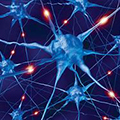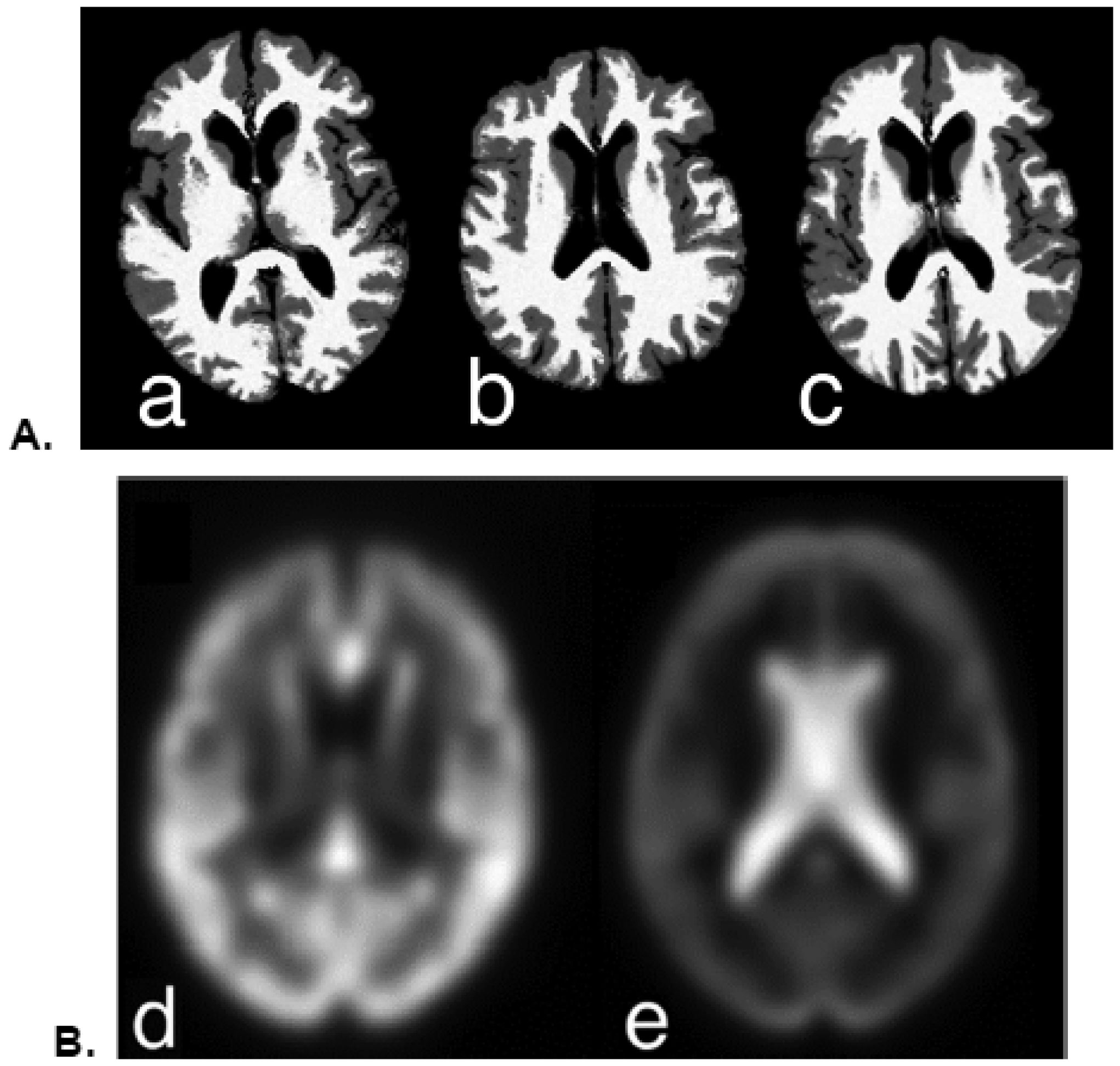1.
Introduction
Ramanujan's last letter to Hardy is one of the most mysterious and important mathematical letters in the history of mathematics. He introduced a class of functions that he called mock theta functions in his letter. For nearly a century, properties of these functions have been widely studied by different mathematicians. The important direction involves the arithmetic properties (see [1,2]), combinatorics (see [3,4]), identities between these functions, and generalized Lambert series (see [5,6]). For the interested reader, regarding the history and new developments in the study of mock theta functions, we refer to [7].
In 2007, McIntosh studied two second order mock theta functions in reference [8]; more details are given in reference [9]. These mock theta functions are:
where
for |q|<1.
The functions A(q) and B(q) have been combinatorially interpreted in terms of overpartitions in [3] using the odd Ferrers diagram. In this paper, we study some arithmetic properties of one of the second order mock theta functions B(q). We start by noting, Bringmann, Ono and Rhoades [10] obtained the following identity:
where
for positive integers m and k. We consider the function
Followed by Eq (1.3), the even part of B(q) is given by:
In 2012, applying the theory of (mock) modular forms and Zwegers' results, Chan and Mao [5] established two identities for b(n), shown as:
In a sequel, Qu, Wang and Yao [6] found that all the coefficients for odd powers of q in B(q) are even. Recently, Mao [11] gave analogues of Eqs (1.6) and (1.7) modulo 6
and proved several congruences for the coefficients of B(q). Motivated from this, we prove similar results for b(n) by applying identities on the coefficients in arithmetic progressions. We present some congruence relations for the coefficients of B(q) modulo certain numbers of the form 2α⋅3β,2α⋅5β,2α⋅7β where α,β≥0. Our main theorems are given below:
Theorem 1.1. For n≥0, we have
In particular, b(12n+9)≡0(mod18),b(12n+10)≡0(mod36).
Theorem 1.2. For n≥0, we have
In particular, b(18n+10)≡0(mod72),b(18n+16)≡0(mod72).
Apart from these congruences, we find some relations between b(n) and restricted partition functions. Here we recall, Partition of a positive integer ν, is a representation of ν as a sum of non-increasing sequence of positive integers μ1,μ2,⋯,μn. The number of partitions of ν is denoted by p(ν) which is called the partition function. If certain conditions are imposed on parts of the partition, is called the restricted partition and corresponding partition function is named as restricted partition function. Euler proved the following recurrence for p(n) [12] [p. 12, Cor. 1.8]:
The numbers k(3k±1)/2 are pentagonal numbers. Following the same idea, different recurrence relations have been found by some researchers for restricted partition functions. For instance, Ewell [13] presented the recurrence for p(n) involving the triangular numbers. For more study of recurrences, see [14,15,16]. Under the influence of these efforts, we express the coefficients of mock theta function B(q) which are in arithmetic progression in terms of recurrence of some restricted partition functions.
This paper is organized as follows: Section 2, here we recall some preliminary lemmas and present the proof of Theorems 1.1 and 1.2. Section 3 includes some more congruences based on the above results. Section 4 depicts the links between b(n) and some of the restricted partition functions.
2.
Proof of Theorems 1.1 and 1.2
Before proving the results, we recall Ramanujan's theta function:
Some special cases of j(a,b) are:
Also,
The above function satisfy the following properties (see Entries 19, 20 in [17]).
We note the following identities which will be used below.
Lemma 2.1. [[18], Eq (3.1)] We have
Lemma 2.2. We have
Proof. The first identity follows from [[19] Eq (14.3.3)]. The proof of second identity can be seen from [20].
Lemma 2.3. We have
Proof. Identity (2.4) is Eq (1.10.1) from [19]. To obtain (2.5), replacing q by −q and then using
Now, we present the proof of Theorems 1.1 and 1.2.
Proof of Theorems 1.1 and 1.2. From Eq (1.6), we have
Substituting the values from Eqs (2.1) and (2.2) in above, we get
Bringing out the terms involving q3n+2, dividing by q2 and replacing q3 by q, we get (1.10). Considering Eq (1.5), we have
Substituting the values from Eqs (2.1) and (2.2), we obtain
Extracting the terms involving q3n,q3n+1,q3n+2 from the above equation, we have
Using Eqs (2.4) and (2.5) in Eq (2.9), we get
Extracting the terms involving q2n,q2n+1 from above, we arrive at
From Eq (2.11), we ultimately arrive at Eq (1.11). To prove Theorem 1.2, consider Eq (2.9) as:
Using Eq (2.3) in above, we get
Bringing out the terms involving q3n+1 and q3n+2 from Eq (2.12), we get Eqs (1.12) and (1.13), respectively.
3.
Congruences
This segment of the paper contains some more interesting congruence relations for b(n).
Theorem 3.1. For n≥0, we have
Theorem 3.2. For n≥0, we have
Theorem 3.3. For n≥0, we have
Theorem 3.4. For n≥0, we have
Proof of Theorem 3.1. From Eq (2.6), picking out the terms involving q3n and replacing q3 by q, we have
Reducing modulo 6, we obtain
With the help of Euler's pentagonal number theorem,
which completes the proof of Theorem 3.1.
Proof of Theorem 3.2. Reducing Eq (1.5) modulo 4, we get
From Jacobi's triple product identity, we obtain
which completes the proof of Theorem 3.2.
Proof of Theorem 3.3. Consider Eq (1.11), reducing modulo 72
or
Extracting the terms involving q3n, replacing q3 by q in Eq (3.15), we arrive at Eq (3.3). Similarly, consider Eq (1.13) and reducing modulo 144, we have
Extracting the terms involving q2n+1, dividing both sides by q and replacing q2 by q, we get Eq (3.6).
From Eq (3.20), we get
Bringing out the terms containing q3n+1, dividing both sides by q and replacing q3 by q, we have b(36n+13)≡0(mod6). Reducing Eq (3.12) modulo 12, we have
Extracting the terms containing q3n+2, dividing by q2 and replacing q3 by q, we obtain Eq (3.5). Reducing Eq (3.12) modulo 18,
Extracting the terms involving q3n+1, dividing both sides by q and replacing q3 by q, we have
or
Extracting the terms containing q3n+1,q3n+2 from above to get Eq (3.7).
Proof of Theorem 3.4. From Eqs (1.5) and (2.4), we have
Bringing out the terms containing even powers of q, we obtain
which can be written as:
Here
where the last equality follows from Jacobi's triple product identity. Using the above identity, we have
Since 2n2−n≢2,4(mod5), it follows that the coefficients of q5n+2,q5n+4 in ∑∞n=0b(4n)qn are congruent to 0(mod5), which proves that b(20n+t)≡0(mod5), for t∈{8,16}.
Consider Eq (1.7)
Now
Using the above identity, we get
Since 2n2≢1,4(mod5), it follows that the coefficients of q5n+1,q5n+4 in ∑∞n=0b(4n+2)qn are congruent to 0(mod20), which proves Eq (3.9). For the proof of next part, consider Eq (1.6) as:
Therefore, to contribute the coefficient of q5n+4, (k,m)≡(2,2)(mod5) and thus the contribution towards the coefficient of q5n+4 is a multiple of 5.
Consider Eq (1.6) as:
With the help of Euler's pentagonal number theorem,
As n(3n+1)≢1,5,6(mod7), it readily proves Eq (3.11).
4.
Recurrence relations
In this section, we find some recurrence relations connecting b(n) and restricted partition functions. First we define some notations. Let ¯pl(n) denotes the number of overpartitions of n with l copies. Then
Let pld(n) denotes the number of partitions of n into distinct parts with l copies. Then
Theorem 4.1. We have
Theorem 4.2.
Theorem 4.3.
Proof of Theorem 4.1. Consider (1.5) as:
Then
From the last equality, we readily arrive at (4.1). To prove (4.2), consider (1.5) as:
which proves Eq (4.2).
Proof of Theorem 4.2. Consider Eq (1.6) as:
which proves Eq (4.3). To prove Eq (4.4), consider Eq (1.6) as:
Comparing the coefficients of qn, we arrive at Eq (4.4).
Proof of Theorem 4.3. Consider Eq (1.8) as:
Comparing the coefficients of qn to obtain Eq (4.5).
5.
Conclusion and open problems
In this paper, we have provided the arithmetic properties of second order mock theta function B(q), introduced by McIntosh. Some congruences are proved for the coefficients of B(q) modulo specific numbers. The questions which arise from this work are:
(i) Are there exist congruences modulo higher primes for B(q)?
(ii) Is there exist any other technique (like modular forms) that helps to look for some more arithmetic properties of B(q)?
(iii) How can we explore the other second order mock theta function A(q)?
Acknowledgments
The first author is supported by University Grants Commission (UGC), under grant Ref No. 971/(CSIR-UGC NET JUNE 2018) and the the second author is supported by Science and Engineering Research Research Board (SERB-MATRICS) grant MTR/2019/000123. The authors of this paper are thankful to Dr. Rupam Barman, IIT Guwahati, for his valuable insight during establishing Theorems 3.1 and 3.2. We would like to thank the referee for carefully reading our paper and offering corrections and helpful suggestions.
Conflict of interest
The authors declare there is no conflicts of interest.















 DownLoad:
DownLoad: